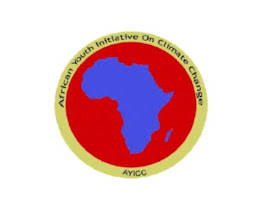Think Eat Save…but do we have enough to eat leave alone to save?
By: Kennedy Wahome
On June 5th 2013, the world
joined hands in marking the 41st World Environmental Day under the
Theme Think Eat Save. The message being put across was that we should think
before we eat in order to save the environment through reduced food wastage,
which FAO estimates at 1.3 billion tonnes of food globally per year. UNEP[1]
estimates that global food production occupies 25% of all habitable land and is
responsible for 70% of fresh water consumption, 80% of deforestation, and 30%
of greenhouse gas emissions. But, in Kenya and the larger Sub Saharan Africa, the
food is not enough to eat leave alone to save, with an estimated 20,000
children dying annually from food related complications. So what ails this
region in matters food security?
One of the main challenges towards
realizing food security is poor food accessibility and distribution. Despite
the fact that Sub Sahara produces adequate food to sustain its population, the
distribution channels are inadequate, so much that within the same country
citizens can be dying of hunger within one region while the food is rotting in
the store and farms due to poor infrastructural and marketing network. In
Kenya, for example, the high costs of transport, poor market structures and
poor road network in the Northern parts have led to poor access of food when
the population needs it most, and when it does the cost implication is
relatively high. In addition, most farmers who produce this food have limited
capacity to transport and market this food in these (Northern) regions, to an
extent that some rots in the farm.
There is therefore an urgent need to address infrastructure systems,
storage systems and market structures to ensure food security.
The second challenge facing food security
in the region is natural calamities, notably climate change and its
consequences. Instances of
droughts, floods, crop failure etc are common across sub Saharan Africa.
Population pressure has further worsened the situation. It is noteworthy that
most of the agriculture in Kenya and the larger sub Sahara is rain-fed, and
rain failure spells disaster in terms of food in this region. In Kenya, for example drought cycles
are estimated at 2-3 years[2]
largely due to adverse impacts of climate change. As such, addressing food
insecurity demands addressing climate change, for example through eco friendly
energy sources, re-afforestation and increased conservation of environmental
and natural resources.
Poor farming practices coupled with high
cost of inputs like fertilizer and seeds are also largely contributing to our
food insecurity. Most farmers have adopted the traditional farming methods,
coupled with increased land subdivision, which have resulted into dwindling
production, land degradation etc. Most ruling regimes across the region have
not put adequate measures to address high cost of farming, and there lacks
sufficient enough credit and funding in the sector. This has negatively
impacted on our production, and there is a need for adoption of contemporary
farming methods that are not land intensive and have a higher production level.
Lastly, our eating habits are also
contributors to food insecurity. One of the brilliant minds in Kenya, whose
name I will withhold for now, suggested that we should be eating when it is
necessary, putting into consideration that we need space for water and air
which are important components in the digestion process. Many at times,
especially in the urban areas, most food is wasted partly due to the fact that
food is consumed out of pleasure and not necessity. Change in consumption can
go a long way in promoting food security and reducing wastage. In addition,
promotion of traditional drought tolerant crops such as millet and sorghum can
also play a vital role in complementing staples food within our communities
especially maize and contribute to increasing food security.
As such, as we the world marks the WED, it
is important for us to Think on how
we can increase our food security and have something to Eat and Save in line
with the Think Eat Save theme…let’s
go!

Comments
Post a Comment